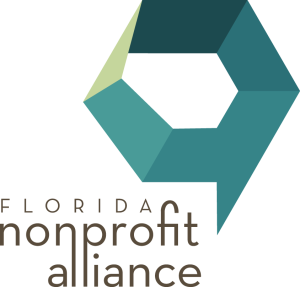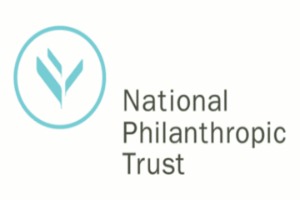A deal that would have launched a new center for civil society at The Foundation Center in New York City headed by respected academic and researcher Lester Salamon is dead.
Salamon will remain at Johns Hopkins University in Baltimore running its Center for Civil Society Studies. The plan for the new Alexis Institute for Civil Society and Philanthropy is being reconfigured, said Sara L. Engelhardt, president of The Foundation Center.
Announced with great fanfare just this past May, the plan was to move Salamon and his staff from Johns Hopkins to New York City and raise $10 million for the Alexis Institute. In comparison, the dissolution was quietly made public via a one-paragraph joint statement.
“We discovered that we had different interpretations of some very crucial terms,” said Salamon when contacted by The NonProfit Times..
An agreement between Salamon and The Foundation Center was signed in May and the transition was underway, he said. “In a way, it’s good that we came to a realization of differences before I disrupted all of the systems that I have in place and made enormous shifts in my life. I think it’s smart for people to be really clear about what their expectations are on all sides,” said Salamon.
“I just wanted to do it because it was an exciting prospect. I still think it was a good idea, but the devil is in the details,” he said.
Salamon has been at Johns Hopkins for 19 years. “I think they (Johns Hopkins’ administration) rolled with the punches. They were very good. Both sides were very helpful in helping me begin the process of moving things,” said Salamon. “They’ve been very supportive in putting things back together. Fortunately, nothing was fundamentally altered. No grants were shifted. The process was beginning, but it hadn’t occurred. So, a lot of the work that I have, and the staff that I had, have stayed in place. And I think, generally, across the world, the people who we had contacts with were relieved that they didn’t have to go through a disruptive process.”
Engelhardt said that the transaction was more like a merger rather than a staff hiring and came with those inherent entanglements. “A university system and an institute within a university system and a nonprofit organization operate very, very differently. As we got down to the things we cared most about, we decided we’d be better off staying in our respected institutions,” said Engelhardt.
In a sense, Salamon has more freedom now than a new center would permit, she said. “In some ways, I think Lester felt that he could move a lot faster because he didn’t have an organization around him. He could decide what he wanted to do on Tuesday and do it on Wednesday. Whereas we have our strategic plan and we have an organization, a nonprofit organization, and therefore we have a system for keeping the whole institution on mission. I think he found it constraining,” she said.
Thomas A. McLaughlin, a national nonprofit consultant with Grant Thornton in Boston and merger expert, said that melding cultures can be difficult. “It sounds like implementation planning raised conceptual issues here. It should be the other way around,” said McLaughlin, who is also a columnist for The NonProfit Times. “Here is the essence of why this didn’t work: The Foundation Center is an industrializer. Lester Salamon is a prototyper,” said McLaughlin.
Salamon declined to be specific on his views of why the merger attempt failed. As to why an announcement was made before all of the contractual points were completed, Engelhardt said that word of the talks was already circulating. “Once you begin talking at a high level you need to start talking to people outside. Once you start doing that you really need to get it out there. In this case we also felt we needed to let people know because of the plans being made on other people’s parts,” she said.
Said McLaughlin, “For those involved in planning a merger, remember this: saying you’re talking raises eyebrows. Saying you’ve reached an agreement raises expectations.”
This is not the first time that major nonprofit industry players have danced the merger samba and not completed the shuffle. The National Center for Nonprofit Associations and the Alliance for Nonprofit Management negotiated for almost a year before deciding not to merge. There were also talks between the New York Philharmonic Orchestra and Carnegie Hall that ended without agreement.
Even though the Alexis Institute is dead, The Foundation Center is moving forward with its Research Institute Initiative. “We hope to have something going on by the end of the year, that is, to have someone in place. I don’t know how quickly these things can go, but we’re moving ahead on several fronts in any case,” said Engelhardt.
The focus of the initiative will probably go back to its roots, which were expanded significantly when Salamon entered the fray. It is important, Engelhardt said, to pay attention “between our doing the research and our developing the capacity to help others do research — like getting them data and having panels of foundations that they can get information from.”
Said Engelhardt, “Working with Lester on the much larger concept gave me a much fuller understanding of all the things you need to do to get where we’re ultimately going. I think it expanded our horizons in ways that I think will be productive for both of us.”
The search is now on for a leader for the now unnamed institute. The organization has gone back to seeking someone using the original position description and strategic plan, which is to find someone to be the senior vice president of The Foundation Center and the head of the institute.
Along with academics, practitioners are also in the mix. “That’s always the problem in a search. When you look at the people who are available, you think, oh my gosh, I want them all rolled into one,” said Engelhardt. “And, unfortunately you can’t get that.” DRFE












